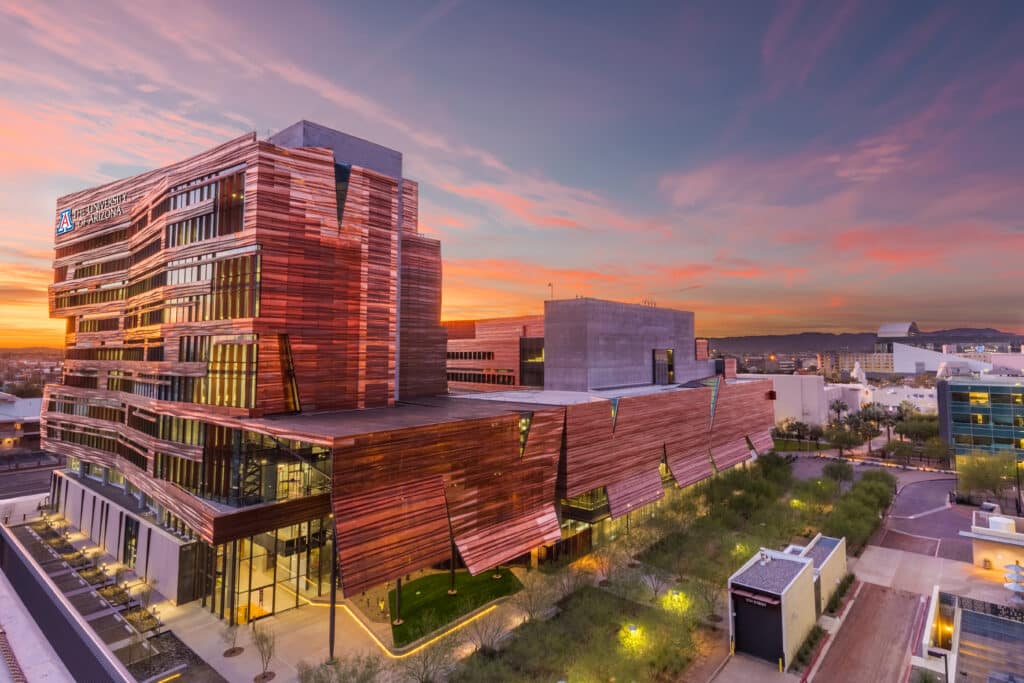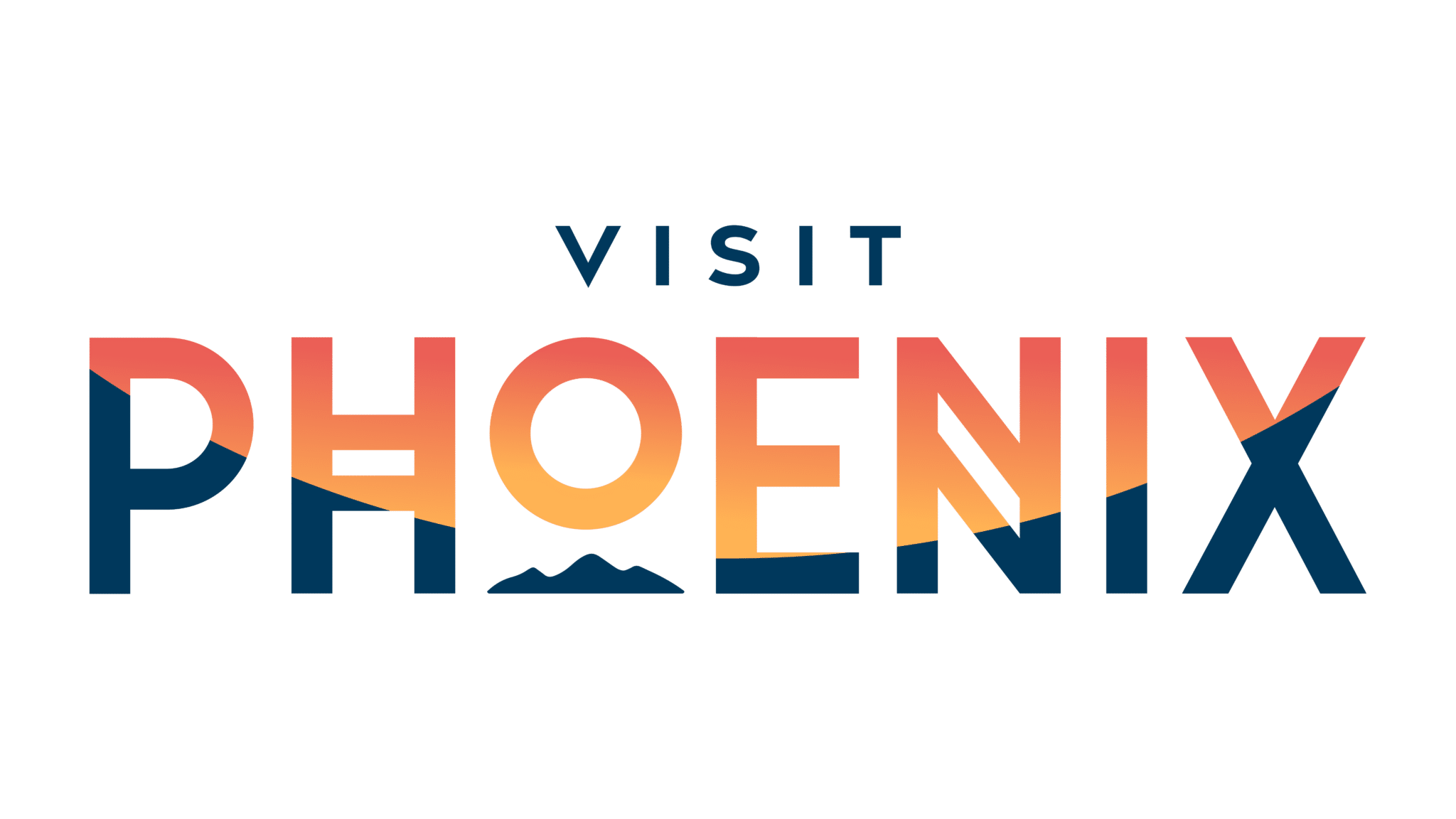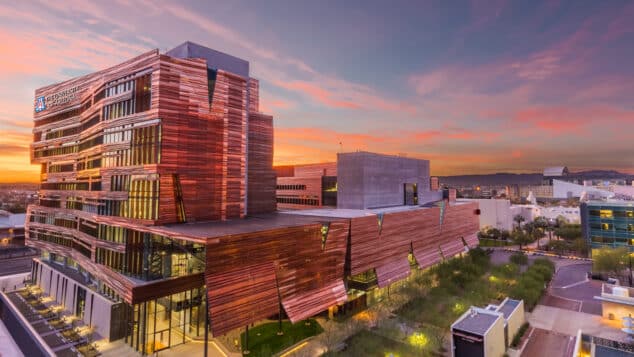Discover Phoenix’s Growing Reach in Healthcare

Greater Phoenix is one of the fastest-growing markets for life sciences in the U.S. (according to the commercial real estate company, CBRE) and a draw for professionals and researchers in biomedicine and healthcare looking to be in the heart of innovation. For meeting planners, that unique knowledge center of leaders and speakers—plus state-of-the-art bioscience facilities conveniently located within walking distance of 4,000 hotel rooms and the Phoenix Convention Center—makes downtown Phoenix an ideal location for large medical and STEM- related meetings.
At the center of the city’s bioindustry hub is the aptly named Phoenix Bioscience Core (PBC), pictured above. This 30-acre urban educational and experimental campus houses the largest concentration of research scientists in the state of Arizona and an ever-growing number of life science companies and institutional innovators in genomics, neurosciences, cancer, and other disciplines. The PBC is designed for collaboration—an inviting setup for business events—and organizers have access to an expansive campus-like learning environment between its buildings and the nearby Phoenix Convention Center.
Downtown Phoenix’s reputation as an emerging life sciences leader will only continue to grow. In the past year alone, Arizona State University announced that it would open its first-ever medical school downtown, allowing for an expanded partnership between ASU and the Mayo Clinic located in Scottsdale. The PBC, in other recent news announced that the Center for Advanced Molecular and Immunological Therapies, or CAMI, would break ground in late 2024. CAMI is a new Phoenix-based University of Arizona Health Sciences center that will have four areas of research focus: cancer, infectious diseases, autoimmune diseases, and real-time immune system monitoring. And the National Institutes of Health will bring its signature research program, the National Institute of Diabetes and Digestive Kidney Diseases, to the PBC campus.
Medical organizations can make use of the PBC’s University of Arizona Center for Simulation and Innovation. This center includes an operating room, a control room, and briefing rooms. The Arizona Telemedicine Center boasts an amphitheater with HD videoconferencing capabilities. These centers of advanced research and next-generation therapeutics will undoubtedly be a magnet to large healthcare conventions, offering those event organizers a vast array of resources and endless program enrichment opportunities. Chest Physicians, the American Telemedicine Association, the Society for Immunotherapy for Cancer, and the Congress of Neurological Surgeons are notable future annual events coming to downtown Phoenix that will tap into the PBC’s resources.
With its diverse portfolio of conference-friendly resorts, Greater Phoenix has long been a popular destination for medical meetings. Now, thanks to the rise of the spectacular Phoenix Bioscience Core (PBC) and the implementation of HCP-compliant pricing at the Phoenix Convention Center, Phoenix offers medical- and science-focused organizations more meeting options than ever.
The PBC’s numerous classrooms and laboratories—all technologically sophisticated and designed for environmental sustainability—offer innovative options for off-site meetings, live streaming, and tours. The PBC allows conference attendees to easily move between the two sites to maximize resources and scheduling. The proximity of the PBC also enables subject matter experts to serve as keynote and panel speakers at conventions. The connection between leveraging local resources and meeting success is growing stronger each year. When determining if your next destination is an industry match, keep these four assessments in mind:
- Industry strength. What is the density of the destination’s intellectual capital ecosystem?
- Local talent. Are there thought leaders and professionals in the market who could serve as keynote speakers?
- Available resources. Can labs, learning centers, or universities be accessed to support program enrichment opportunities?
- Return on your investment. How much time and money does leveraging the host destination’s expertise save your organization?
For more information, contact us at visitphoenix.com/meetings

This post was powered by Healthcare Collaborative partner, Visit Phoenix.
Tags
Related Articles
Discover Phoenix’s Growing Reach in Healthcare
Learn more about how Greater Phoenix is one of the fastest-growing markets for life sciences...
The Power of Young Medical Professionals
How to embrace young medical professionals and the changing membership landscape.
Addressing the AANHPI Leadership Gap in Healthcare
Using our voice is more important than ever before.




